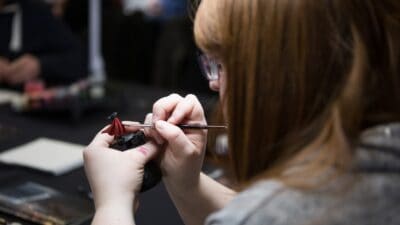Is chief executive Dave Lewis’s turnaround strategy working for Tesco (LSE: TSCO)?
Well, according to research from Kantar Worldpanel, a firm that describes itself as the world leader in consumer knowledge and insights based on continuous consumer panels, Tesco’s sales grew 1.1 percent over the 12 weeks to March 1.
A dirty little secret
From the moment he took control of the sick supermarket chain in September, Mr Lewis began butchering costs, selling prices, poor supply-chain practices, and dodgy corporate governance. Heads rolled and things changed.
We shouldn’t look back over our shoulders because Tesco’s old way of doing business is gone forever. If we want a glimpse of the future for Tesco and its mid-tier supermarket peers, I reckon we should look at what discounting competition such as Lidl and Aldi is doing. I’m convinced that, in the end, Tesco, J Sainsbury (LSE: SBRY), Wm Morrison Supermarkets (LSE: MRW) and Asda will move towards the discounting business model in order to stay in business.
The biggest disrupting threat to the industry comes from the discounters. You see, the likes of Aldi and Lidl have a dirty little secret that needs to come out in the open: not only do they provide the cheapest food staple options for consumers, in many cases the food stuffs they sell knock spots off what the main-stream supermarkets push to us on quality, too. If you don’t believe me, go and try some.
Such a quality-nutmegging is what makes the likes of Lidl and Aldi the fiercest enemy to Tesco and the other big operators. Upmarket competition such as Waitrose looks like a sideshow.
The first battle is won
It would be remarkable if Dave Lewis’s dramatic actions didn’t produce any effect at all. For now, it looks like the slide in business might have halted. However, winning the first battle doesn’t necessarily presage winning the war. You wouldn’t think that by looking at Tesco’s share price recently, though.
Since the nadir of around 165p at the end of last year, Tesco shares rose about 42% to today’s level, recently hovering around 234p. That puts Tesco on a forward P/E rating for year to February 2017 of about 16.5. It’s as if the enemy has signed a declaration of surrender and Tesco is free to continue its ascendancy to world domination. Celebrations are premature in my view: Tesco’s forward growth is far from assured over the medium term.
Growing fast
It’s a different story altogether for life insurer Prudential (LSE: PRU). As the firm continues to pursue its expansion opportunity in Asia, it keeps on delivering impressive financial results and the share price responds accordingly.
In 2009, in the depths of the credit crunch fall-out, Prudential’s shares dipped to around 209p, down about 283% from their 2007 peak of about 800p. That’s typical cyclical share-price behaviour, as we’d expect with a constituent of the financial sector. However, since then we’ve moved way beyond mere recovery. A 680% surge took the shares to today’s level, recently exceeding 1630p. There’s no denying that a wave of business growth accompanied the share-price recovery.
However, after such a good run in the business and with the shares, I’d be cautious about buying into the Prudential story now. As with all insurers, a fair bit of the firm’s earnings come from the capital it invests and, as such, Prudential’s trading outcomes tend to reflect the movements of investment markets and macro-economic conditions.
Geared to the markets
Some describe financials such as Prudential as being geared to the markets, meaning that the share price tends to accentuate market movements. That’s one reason the shares have done so well on the current up-leg of the macro-economic cycle with markets in bull-mode. Prudential itself warns that investment impairments or reduced investment returns could reduce the firm’s capital and impair its ability to write significant volumes of new business, or increase the potential adverse impact of product guarantees, or have a negative impact on its assets under management and profit.







